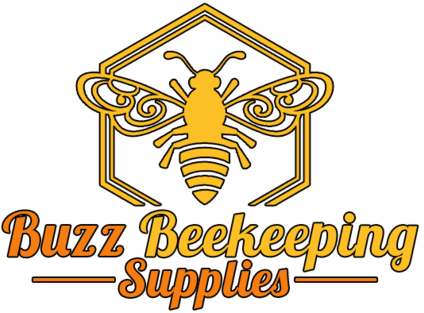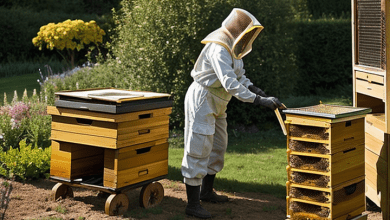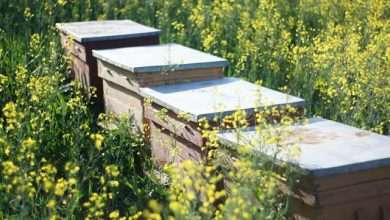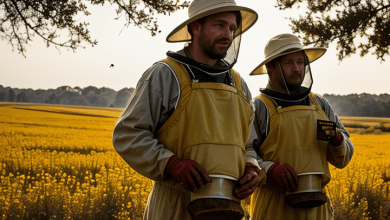Beekeeping Supplies Tennessee

Tennessee, with its diverse flora and favorable climate, offers a thriving environment for honeybee colonies.
No matter where you are looking for beekeeping supplies in Tennessee, we’ve got you covered.
Beekeeping in Tennessee
Beekeeping is an integral part of agriculture in Tennessee, a state known for its vast agricultural landscapes. In fact, Tennessee ranks 31st in the United States in yearly honey production, with 423,000 pounds.
Essential Equipment for Beekeepers in Tennessee
Beekeeping is an intricate journey that requires proper knowledge and essential supplies to ensure the successful management of bee hives. Beekeepers rely on specific equipment to maintain the comfort and productivity of honeybees. Understanding the fundamental bee supplies is crucial before embarking on this rewarding endeavor.
Beehive Components
- Hive Boxes: Hive boxes, also known as supers, are the foundational homes for honeybees and their honeycombs. In Tennessee, the use of Langstroth hive boxes is prevalent, as they allow for easy inspection and manipulation of frames, essential for bee colony growth.
- Frames: Suspended within hive boxes, frames provide structural support for honeycombs, brood rearing, and honey storage. Beekeepers in Tennessee predominantly employ wooden frames with a plastic foundation, striking a balance between strength and ease of use.
- Bottom Boards: The base of the beehive, bottom boards play a crucial role in hive stability and ventilation. Their selection is vital in Tennessee’s climate to withstand temperature fluctuations and provide ample ventilation for the hive.
- Inner Covers and Outer Covers: Completing the structural integrity of the hive, inner covers and outer covers offer insulation and protection to honeybees, safeguarding them from harsh weather conditions.
Protective Clothing for Beekeepers: Ensuring Safety and Comfort
As a beekeeper, it is crucial to have the right protective clothing to ensure your safety during hive inspections and honey harvesting. There are several options available, from bee suits and gloves to beekeeping boots and veils. In this article, we will explore these various options to help you make informed choices for your beekeeping journey.
- Bee Suit: A bee suit is a must-have for any beekeeper, as it provides vital protection when working with honey bees. There are two main types of bee suits available: canvas beekeeping suits and ventilated bee suits. Canvas suits offer excellent durability and sting resistance, providing maximum coverage against bee stings. On the other hand, ventilated bee suits are designed with a breathable mesh fabric, allowing beekeepers to work comfortably in hot weather conditions.
- Gloves: Choosing the right pair of beekeeping gloves is essential to safeguard your hands from stings while still offering dexterity. There are two main options to consider: goatskin bee gloves and cowhide bee gloves. Goatskin gloves are known for their exceptional tactile sensitivity, enabling beekeepers to handle delicate tasks with ease. On the other hand, cowhide gloves provide robust protection against stings due to their thick leather construction.
- Beekeeping Boots: Protecting your feet is equally important when tending to your honey bee colonies. Beekeeping boots are specifically designed to keep bees from accessing your feet and are a vital addition to your beekeeping supplies. These boots typically feature a sturdy construction and protective padding to prevent bee stings. Comfort and ankle support are also important factors to consider when selecting beekeeping boots.
- Veil: A reliable beekeeping veil is essential for safeguarding your face and neck from bee stings. These veils typically consist of a fine mesh that allows for excellent visibility while ensuring bees cannot reach your skin. Some veils come attached to beekeeping suits or jackets, while others are detachable, offering flexibility to suit individual preferences.
Many times, you can purchase a combo pack of a bee suit and bee gloves at a discount. It is important to note that your beekeeping suit or beekeeping jacket should come with a veil included.
Beekeeping Tools: Essential Equipment for Success
Beekeeping requires a set of essential tools to ensure the smooth management of hives and the well-being of honeybees. In Tennessee, beekeepers rely on a range of equipment to effectively care for their colonies. From calming smokers to delicate queen marking tools, having the right tools can make all the difference in the world of beekeeping.
- Smoker: A Beekeeper’s Best Friend – The smoker is a vital tool that every beekeeper should have in their arsenal. It plays a crucial role in calming honeybees during hive inspections, making it safer and more manageable for beekeepers to work with their bees. By producing cool smoke that masks the alarm pheromones released by guard bees, the smoker helps pacify the colony and reduce the risk of stings. Additionally, the smoke triggers a feeding response in the bees, making them less inclined to sting. It is essential for beekeepers to always have a smoker and extra fuel on hand to effectively manage their hives.
- Hive Tool: A Versatile Essential – Another indispensable tool for beekeepers is the hive tool. This versatile instrument is used to separate and pry apart hive components during inspections. It aids in loosening frames that are stuck together with propolis, a sticky resin-like substance produced by bees. With a flat blade on one end and a curved hook on the other, the hive tool is perfect for lifting frames, scraping off excess propolis, and removing burr comb. Its robust construction ensures that beekeepers can efficiently dismantle and reassemble their hives without causing harm to the bees or the equipment.
- Bee Brush: Care and Consideration – While the smoker and hive tool serve functional purposes, the bee brush is designed to cater to the care and well-being of the bees. This soft-bristled brush allows beekeepers to gently move bees away from specific areas during inspections without causing harm or stress. It helps keep the bees calm and prevents unnecessary injury or crushing. Whether it’s gently removing bees from frames, boxes, or other clustered areas, a bee brush is an essential tool for maintaining harmony between beekeepers and their precious honeybees.
- Queen Marking Tools: Tracking the Heart of the Hive – Queen marking tools are crucial for identifying and tracking the queen bee within a colony. These tools typically consist of a small, colored plastic or metal marker that can be carefully applied to the queen’s thorax. This marking helps beekeepers easily locate and follow the queen during hive inspections, reducing the risk of accidentally harming or misplacing her. The color code system established by beekeeping associations provides vital information about the age and year of the queen, allowing beekeepers to monitor their colonies’ health and longevity effectively.
Hive Feeders
Beekeepers play a crucial role in ensuring the health and well-being of their bee colonies. One of the key aspects of beekeeping is providing bees with a consistent and reliable source of food.
While bees primarily collect nectar and pollen from flowers, there are times when supplemental feeding becomes necessary, especially during periods of scarcity or when establishing new colonies.
The Role of Hive Feeders
Hive feeders are vital tools in the beekeeping arsenal, allowing beekeepers to provide their bees with the nourishment they need. These feeders are designed to hold various types of supplemental food, such as sugar syrup or pollen substitute, ensuring that bee colonies have a readily accessible and controlled source of nutrition. By providing adequate nourishment, hive feeders contribute to the overall health, productivity, and growth of bee colonies.
- Entrance Feeders: Entrance feeders are among the most commonly used hive feeders, favored for their simplicity and effectiveness. These feeders are typically placed near the entrance of the hive, allowing bees easy access to the supplemental food. With small holes or slots that prevent drowning, entrance feeders are user-friendly and straightforward to monitor, making them a popular choice for beekeepers at all experience levels.
- Boardman Feeders: Boardman feeders are another popular choice among beekeepers, especially those new to the craft. Similar to entrance feeders, they are positioned at the hive entrance, with a small jar equipped with tiny holes or slits for easy bee access. Boardman feeders can accommodate a larger volume of food compared to entrance feeders and are often used with commercially available sugar water mixes, making them an attractive option for beekeepers looking to provide ample nourishment to their colonies.
- Top Feeders: For beekeepers managing larger colonies or in need of substantial supplemental feeding, top feeders are a valuable resource. Placed directly on top of the hive, these feeders can hold significant amounts of food and come with floats or caps to prevent bees from drowning. This type of feeder reduces the need for frequent hive disturbance, allowing beekeepers to provide ample nourishment without disrupting the colony.
- Division Board Feeders: Division board feeders are unique in that they are positioned within the hive itself, dividing the brood chamber. Placed between frames, these feeders allow bees to access food from within the hive, minimizing exposure to external elements during unfavorable weather conditions. Division board feeders efficiently meet the bees’ nutritional needs while safeguarding them from harsh environmental challenges.
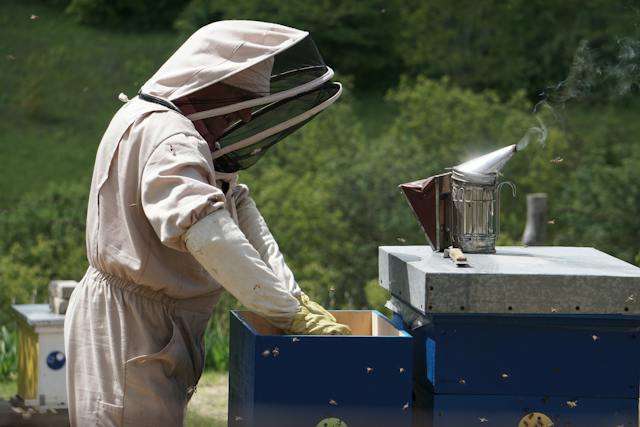
Food for Bees
Honeybees, just like any other living creature, require a balanced diet to ensure their overall health and productivity. While honey serves as their primary source of food, there are situations where supplemental feeding becomes necessary.
Sugar Syrup: A Staple Food Source for Bees
Sugar syrup stands as one of the most commonly used food sources for feeding bees. It can be easily prepared by dissolving granulated sugar in water, with the recommended ratios being 1:1 (one part sugar to one part water) for spring and summer feeding, and 2:1 for fall feeding.
It is important to note that using only granulated white sugar in the preparation of sugar syrup is crucial to preventing potential diseases. Avoiding honey, brown sugar, or other sweeteners is essential to ensure the bees’ well-being.
Pollen Substitute: A Supplementary Option for Dietary Needs
In times when natural pollen is scarce, pollen substitute serves as an effective means of supplementing the bees’ dietary needs. Commercially available pollen substitute can be mixed with water to create a patty-like consistency, which can then be consumed by the bees. However, it should be noted that natural pollen from a diverse range of flowers is always preferred over substitutes.
Pest Control Products for Beekeepers
Beekeeping is a rewarding and essential practice, but it also comes with its set of challenges. One of the most important aspects of beekeeping is ensuring the health and well-being of the honeybee colonies by managing potential pests and diseases.
To effectively safeguard your bees, it’s crucial to have the right pest control products in your beekeeping toolkit. Here are some essential pest control products that every beekeeper should consider:
Varroa Mite Treatments: Varroa mites pose a significant threat to honeybee colonies and can wreak havoc on their health if left untreated. It’s essential to have effective treatments to control Varroa mite infestations.
Some options for Varroa mite treatments include:
- Chemical Treatments: Chemical treatments such as formic acid or oxalic acid have been proven to be effective in controlling Varroa mite infestations. These treatments work by targeting the mites while ensuring minimal impact on the bees.
- Organic Treatments: For beekeepers who prefer natural and organic options, there are alternatives such as thermal treatments, thymol-based products, or essential oils. These treatments provide a more natural approach to managing Varroa mite infestations while being environmentally friendly.
Wax Moth Control:
Wax moths are another common pest that can infest and damage honeybee hives by feeding on beeswax comb. Effectively controlling wax moth populations is crucial to maintaining the integrity of the hives.
Some methods for wax moth control include:
- Chemical Treatments: Chemical treatments like paradichlorobenzene or freezing frames have been known to effectively control wax moth populations. These treatments work by targeting the wax moth larvae and preventing further damage to the hives.
- Regular Hive Inspection: Aside from chemical treatments, regular hive inspection is essential in identifying and preventing wax moth infestations promptly. Early detection can significantly mitigate the impact of wax moths on the hives.
In conclusion, maintaining the health and well-being of honeybee colonies is essential for every beekeeper. By having the right pest control products in your beekeeping toolkit, you can effectively manage and mitigate the impact of pests and diseases on your hives.
Harvesting Equipment
When it comes to collecting honey from beehives, having the right extraction equipment is essential for a successful and efficient process. Beekeepers rely on a variety of tools and apparatus to ensure the honey extraction process is carried out effectively.
Understanding the different types of extraction equipment and their specific uses is crucial for beekeepers to maintain the quality of their honey.
- Honey Extractors: A honey extractor is a fundamental device used by beekeepers to extract honey from honeycomb frames without causing damage to the delicate structure of the comb. The extractor operates on the principle of centrifugal force, spinning the frames to separate the honey from the comb. There are manual and electric models of honey extractors, each offering its unique advantages. The choice between manual and electric honey extractors depends on the beekeeper’s preference and the scale of their beekeeping operations.
- Uncapping Tools: Before the honey extraction process, it is necessary to uncap the cells of the honeycomb frames to release the honey. Uncapping tools are specifically designed for this task, offering beekeepers a range of options such as uncapping knifes, electric uncapping knives, and uncapping forks. The selection of uncapping tools is based on the beekeeper’s preferred uncapping method and the setup of their hives.
- Honey Filters: Once the honey is extracted from the frames, it undergoes the process of filtering to remove any impurities or debris. Honey filters, also known as honey strainers or sieves, feature fine mesh screens that effectively trap unwanted particles while allowing the honey to pass through. This crucial step ensures that the honey maintains its purity and clarity, meeting the standards of high-quality honey.
- Honey Buckets: After the honey has been extracted and filtered, it needs to be stored properly to maintain its freshness and quality. Food-grade buckets are the ideal option for storing honey, as they are specifically designed to meet strict food safety standards. These buckets are made from food-safe materials and come with airtight lids, safeguarding the honey from contaminants. Beekeepers can rely on these food-grade buckets to store their harvested honey until it is ready for packaging or consumption.
Tips for Properly Maintaining Your Beekeeping Supplies
Beekeeping supplies are essential tools for ensuring the success of a beekeeping operation. Proper maintenance is crucial for ensuring the longevity and effectiveness of these supplies.
Here are some tips for maintaining your beekeeping supplies to ensure that they remain in good working condition and continue to benefit both the bees and the beekeeper.
- Proper Storage and Maintenance: One of the most important aspects of maintaining beekeeping supplies is proper storage and maintenance. Storing the equipment in a dry and secure location can help prevent damage and deterioration. Regular maintenance, such as cleaning and oiling, can also extend the lifespan of the supplies and ensure that they continue to function effectively.
- Regular Cleaning and Inspection: It is important to regularly clean and inspect beekeeping supplies to ensure that they are in good working condition and free from any potential contaminants. Regular cleaning can help prevent the buildup of debris and contaminants, while thorough inspections can help identify any issues that may need to be addressed.
- Upgrading and Replacing Worn-Out Equipment: Over time, beekeeping supplies may become worn out and in need of replacement. It is important to regularly assess the condition of the equipment and upgrade to newer and more efficient tools when necessary. Upgrading to newer equipment can benefit both the bees and the beekeeper by improving the efficiency and effectiveness of the beekeeping operation.
- Staying Informed About New Technologies: The field of beekeeping is constantly evolving, and it is important for beekeepers to stay informed about new technologies and innovations that can improve their beekeeping practices. Keeping up to date with the latest advancements in beekeeping equipment and techniques can help beekeepers optimize their operations and ensure the well-being of their bees.
- Resourcefulness and DIY Solutions: In some cases, beekeepers may need to get creative and come up with do-it-yourself (DIY) solutions to address specific challenges or equipment needs. Being resourceful and finding innovative solutions to common beekeeping issues can help beekeepers overcome obstacles and improve their beekeeping practices.
State Association
The state association is the Tennessee Beekeepers Association.
Choosing the Right Bee Species
- It is crucial to select the right bee species for your beekeeping venture in Tennessee. Common choices include Italian bees, Carniolan bees, and Buckfast bees, each with their unique characteristics.
- Consider factors such as temperament, disease resistance, honey production, and winter hardiness when selecting bee species suited to Tennessee’s climate.
- Consult with local beekeepers or experienced professionals to determine the best bee species for your specific area in Tennessee.
Buying Bees in Tennessee
Where to buy bees and nucleus hives (nucs) in Tennessee?
One of the best places to purchase queen bees, packaged bees and nucs is your local bee club.
Engaging with a beekeeping club can greatly enhance your knowledge, skills, and overall experience as a beekeeper.
Here is a list of local bee clubs in Tennessee:
- Anderson County Beekeepers Association (ACBA)
- Beekeepers of Middle Tennessee (BMT)
- Blount County Beekeepers Association
- Cheatham County Beekeepers Association
- Cherokee Beekeepers Association
- Clarksville Montgomery County Beekeeping Association
- Clinch Valley Beekeepers Association
- Columbia Area Beekeepers Association
- Cookeville Beekeepers
- Cumberland County Beekeepers Association
- Heritage Beekeepers
- Houston-Stewart County Beekeepers Association
- Jackson Area Beekeepers Association
- Knox County Beekeepers Association
- Lawrence/Wayne Beekeepers Association
- Marshall County Beekeepers Association
- Memphis Area Beekeepers Association
- Nashville Area Beekeepers Association
- Northwest Tennessee Beekeepers Association
- Ocoee Region Beekeepers Association
- Rhea County Beekeepers Association
- Reelfoot Beekeeper’s Association
- Sevier County Beekeepers
- Tennessee Valley Beekeepers Association
- Washington County Beekeepers Association
- Wilson County Beekeepers Association
Conclusion
Equipping yourself with the necessary supplies is fundamental for successful beekeeping in Tennessee. Quality equipment not only contributes to the welfare of the bees but also ensures the safety and effectiveness of the beekeeper.
By investing in the right beehive, protective clothing, and essential tools, beekeepers can thrive in their apiary, fostering a harmonious connection between humans and nature.
FAQ’s:
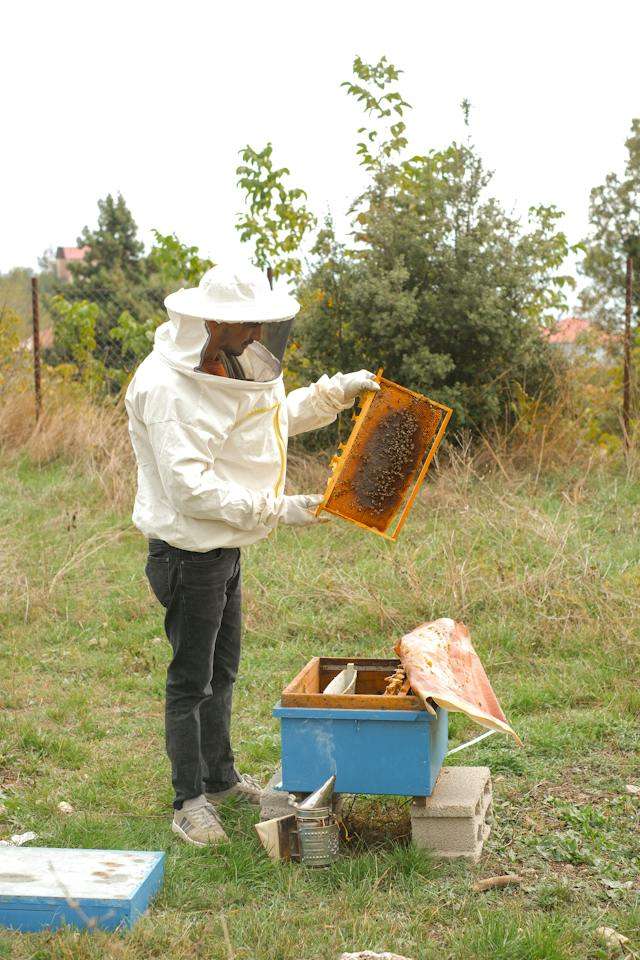
What are bee supplies and why are they important for beekeepers in Tennessee?
- Bee supplies refer to various tools, equipment, and materials necessary for maintaining bee colonies and practicing beekeeping. They include items such as beehives, frames, protective clothing, hive tools, feeders, and more. These supplies are essential for beekeepers in Tennessee to effectively manage their hives, ensure the health of their bees, and optimize honey production.
When should I start beekeeping in Tennessee?
- Spring is the best time to start, but you can start researching and buying beekeeping supplies in the winter months. Then you will be prepared to purchase bees in early spring.
Where can I find reliable bee supplies in Tennessee?
- There are numerous places to find bee supplies in Tennessee. You can check out local beekeeping supply stores, agricultural supply centers, or even online platforms dedicated to beekeeping equipment. It’s important to choose reliable sources that offer high-quality products to ensure the success of your beekeeping venture.
Are there any legal requirements or permits necessary for beekeeping in Tennessee?
- Yes, in Tennessee, beekeepers are obligated to register their beehives with the State Apiarist and obtain an Apiary Registration Permit. Additionally, some local ordinances may have specific regulations regarding beekeeping, so it’s crucial to consult with local authorities.
How do I prevent bee stings while handling the hives?
- To minimize the risk of bee stings, wearing protective clothing, including a beekeeping suit, gloves, and a veil, is essential. Using a smoker to emit smoke around the hive helps calm the bees and reduces their inclination to sting.
Do I need any specific tools for beekeeping in Tennessee?
- Yes, several tools are essential for proper beekeeping in Tennessee. These include a hive tool for prying apart frames and boxes, a bee brush for gently moving bees, a smoker to calm the bees during inspections, and a bee feeder for supplemental feeding when necessary. Each of these tools serves a unique purpose and aids in carrying out necessary beekeeping tasks.
How should I choose beekeeping protective clothing?
- When selecting beekeeping protective clothing, prioritize safety and comfort. Look for a full-body suit or jacket made of durable, lightweight fabric that provides ample protection against bee stings. Ensure that the clothing has a veil or hood that securely covers your face and neck, as those are particularly sensitive areas. Additionally, gloves, beekeeping boots, and a hat can further enhance your protection.
What should I look for in a beekeeping supplier?
- When you are looking for the best beekeeping supplies in Tennessee, it is important to keep a few things in mind. First of all, you want to make sure that the beekeeping supplies you purchase are of the highest quality. It is also important to make sure that you are buying supplies from a reputable beekeeping supplier.
